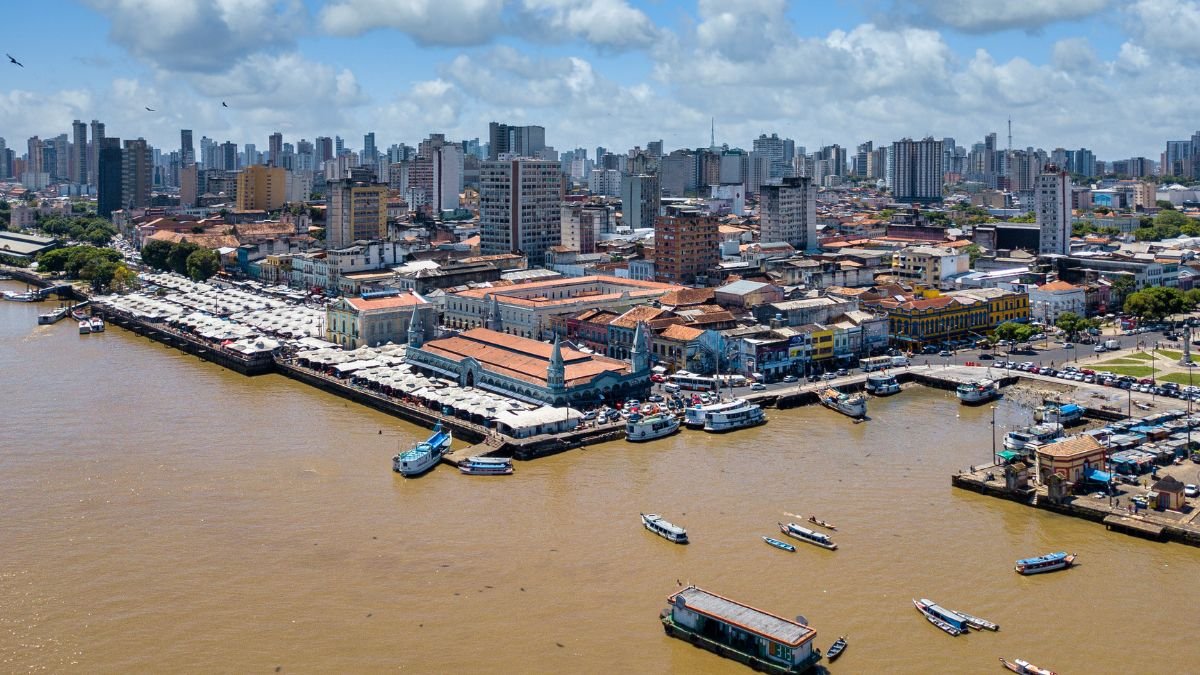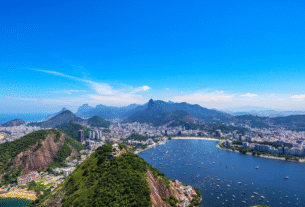Introduction
Have you ever imagined a city where urban life blends seamlessly with the Amazon’s wild beauty? Rio Branco, the capital of Acre, offers just that, a rare fusion of culture and nature in western Brazil. This remarkable city is a gateway to the Amazon rainforest a vibrant hub of cultural diversity and artistic expression.
With a population of nearly 388,000, this vibrant city stands as the country’s westernmost major urban hub, characterized by its lively streets filled with local markets, parks, and a rich tapestry of traditions that reflect the indigenous heritage and the influence of various immigrant communities.
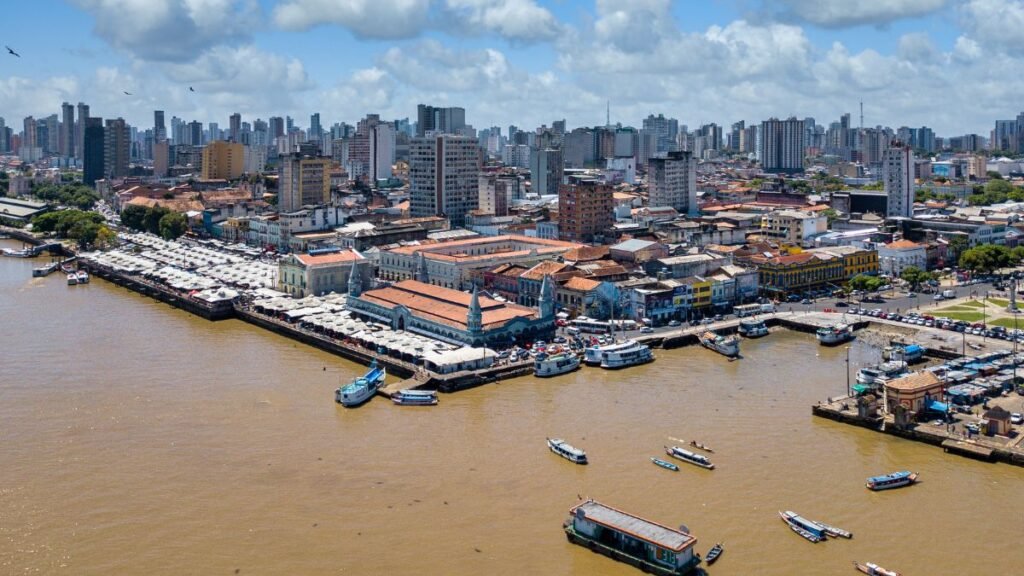
Nicknamed the “Capital of Nature,” this hidden gem surprises visitors with its rich history and eco-tourism potential. Founded in 1882, it’s the fourth-oldest northern capital, yet its remote coordinates (9°58′29″S 67°48′36″W) keep it off most tourist radars.
The city is surrounded by lush landscapes and vibrant ecosystems, making it an ideal starting point for exploring the Amazon rainforest, which is teeming with unique flora and fauna. Eco-tourism thrives here, offering activities such as guided jungle treks, wildlife spotting, and visits to indigenous communities, all of which provide deeper insights into the region’s cultural heritage. But that’s part of its charm.
Key Takeaways
- Discover a unique urban-Amazonian blend in Acre’s capital city.
- Explore one of South America’s lesser-known historical destinations.
- Experience eco-tourism in the “Capital of Nature.”
- Visit Brazil’s westernmost major urban center.
- Uncover surprises in a city with deep cultural roots.
Introduction: Discovering Rio Branco
Tucked away in Brazil’s western frontier lies a city where Amazonian wilderness meets urban charm. The capital of Acre defies expectations, offering a gateway to both rainforest adventures and rich cultural tapestries.
The city serves as a vibrant hub for eco-tourism, drawing visitors eager to explore its breathtaking natural surroundings and the diverse wildlife that inhabits the nearby rainforest. Here, travelers can immerse themselves in the beauty of the Amazon, with opportunities for guided tours that reveal the secrets of the jungle and its unique ecosystems.
Adventurous souls can partake in activities such as canoeing along winding rivers, birdwatching for rare species, and hiking through lush trails that showcase the region’s incredible biodiversity. Additionally, Rio Branco is renowned for its warm and welcoming atmosphere, where locals take pride in sharing their heritage and traditions, making every visit a culturally enriching experience.
Festivals celebrating indigenous cultures and local cuisine provide a glimpse into the vibrant life of the community, ensuring that visitors leave with not just memories of the stunning landscapes but also a deeper appreciation for the people who call this remarkable place home.
Where Is Rio Branco?
Nestled in the Acre River valley, the city sits at a unique tri-border location near Peru and Bolivia, making it a fascinating point of convergence for cultures and trade. Founded in 1882 as a rubber plantation under a historic Gameleira tree, its elevation of 143 meters keeps it lush and green year-round, creating a picturesque backdrop for both residents and visitors alike.
The rich soil and favorable climate contribute to the vibrant flora and fauna that characterize the area, making it a hotspot for biodiversity.
Today, the urban landscape splits across the river, showcasing a blend of history and modernity:
- First District: The bustling historic center with colonial-era landmarks, where cobblestone streets echo tales of the past and charming architecture reflects the city’s rich heritage.
- Second District: A modern hub blending commerce and residential life, featuring contemporary buildings, shopping centers, and vibrant public spaces that cater to the diverse needs of its growing population.
Why Visit Acre’s Capital?
This state capital is more than a stopover; it’s a launchpad for adventure and discovery. The Interoceanic Highway, a vital artery of transportation, connects it to bustling Pacific ports, facilitating trade and travel. Meanwhile, the surrounding Amazon rainforest beckons explorers with its rich biodiversity and untouched beauty, offering numerous opportunities for eco-tourism and exploration.
Cultural roots run deep here, weaving a rich tapestry of influences that define the city’s identity. Syrian and Lebanese immigrants have significantly influenced the city’s cuisine and architecture, creating a unique fusion of flavors and styles that is unique to the state.
From vibrant markets filled with exotic spices and fresh produce to scenic riverside trails that invite leisurely strolls, every part of Rio Branco tells a captivating story of its past and present, inviting visitors to immerse themselves in its diverse cultural heritage.
7 Unexpected Things to Do in Rio Branco
Few places blend urban energy with Amazonian mystique like this underrated capital. From suspended bridges that sway gently in the breeze to rodeo showdowns that showcase local culture, here’s how to experience the city’s unique rhythm and immerse yourself in its vibrant atmosphere.
1. Walk Across the Joaquim Macedo Catwalk
This 2006 engineering marvel spans the Acre River, linking the city’s historic and modern districts in a stunning display of architecture and ingenuity.
The pedestrian-only suspension bridge offers panoramic views of the waterway and the surrounding tropical rainforest, creating a breathtaking backdrop for a leisurely stroll.
As you walk across, you can feel the gentle sway of the bridge beneath your feet, which adds to the thrill of the experience. The vibrant sounds of nature and the distant chatter of city life blend harmoniously, inviting you to pause and take in the beauty surrounding you.
2. Explore the Gameleira Tree’s Historical Roots
A 20-meter strangler fig tree marks the site where the city was founded in 1882, serving as a living monument to the rich history of the region.
This impressive tree, with its sprawling roots and thick canopy, has stood witness to the many changes that have shaped the area over the decades. The tree witnessed the Acre War conflicts, its shade once sheltered rubber tappers and revolutionaries who sought refuge from the sun while planning their next moves.
Today, visitors can gather around the tree to learn about its significance, as it has become a symbol of resilience and community spirit, representing the struggles and triumphs of the people of Acre.
3. Visit the Autonomists Memorial
Dive into the 1903 Treaty of Petrópolis through rare photographs and artifacts that narrate the fascinating story of Acre’s integration into Brazil.
The memorial’s exhibits reveal how Acre became part of Brazil after a bloodless revolution, showcasing the peaceful negotiations that took place.
Interactive displays and informative panels provide context, making it easy for visitors to grasp the importance of this historical event and its impact on the region’s identity.
4. Stroll Through Maternity Park
Families love this 2002 urban green space, which has become a central hub for relaxation and recreation in the city. Skate parks, bike trails, and playgrounds make it a lively escape for both children and adults alike.
The park is adorned with lush greenery and vibrant flowers, creating a picturesque setting for picnics and outdoor activities. It also hosts community events and cultural gatherings, fostering a sense of belonging among residents and visitors.
5. Discover the Old Market’s Revival
Syrian-Lebanese immigrants shaped this century-old trading hub, which has long been a vibrant center of commerce and cultural exchange. This market has served as a vital economic artery for the community, acting as a meeting point where diverse cultures intersect and fostering a unique blend of traditions and practices.
Today, its arched doorways house charming cafes serving traditional dishes like kibbeh and tapioca crepes, offering a taste of the rich culinary heritage that these communities have brought to the region. Each bite reflects the history and stories of those who have contributed to this melting pot of flavors.
The market buzzes with activity, where local artisans display their crafts, from handmade jewelry to intricate textiles, and visitors can immerse themselves in the lively atmosphere, surrounded by the sounds and scents of a bustling marketplace.
The lively chatter of vendors and the aroma of fresh produce create an inviting ambiance, making it a must-visit destination for anyone looking to experience the heart and soul of the city.
6. Tour the Rio Branco Palace Museum
The 1930 government building now showcases Acre’s history through a variety of exhibits that narrate the region’s past, from indigenous cultures to the era of the rubber boom. Don’t miss the stained-glass window depicting the Acre River’s journey through the rainforest, a stunning piece of art that captures the natural beauty and ecological significance of the area.
The museum serves as a repository of artifacts and a cultural hub where educational programs and community events are held, inviting both locals and tourists to engage with Acre’s rich heritage.
7. Attend ExpoAcre Field Day Rodeo
Each July, the Via Verde complex hosts bull riding and folk dances, transforming the area into a lively festival ground filled with excitement and tradition. Savor regional dishes like tacacá soup while cowboys compete in thrilling events that showcase their skills and bravery.
The rodeo showcases the region’s agricultural practices and serves as a gathering point for families and friends, fostering a sense of community and celebration among attendees. Live music and dance performances enhance the festive atmosphere, creating an unforgettable experience for all attendees.
| Activity | Highlight | Best Time to Visit |
|---|---|---|
| Joaquim Macedo Catwalk | Sunset views | Year-round |
| ExpoAcre Rodeo | Bull riding | July–August |
| Palace Museum | Stained-glass art | Weekdays |
Why Rio Branco Surprises Travelers
Few cities blend urban sophistication with untamed wilderness like this hidden gem. Here, glass-fronted buildings share the skyline with the emerald canopy of the Amazon rainforest, creating a striking contrast.
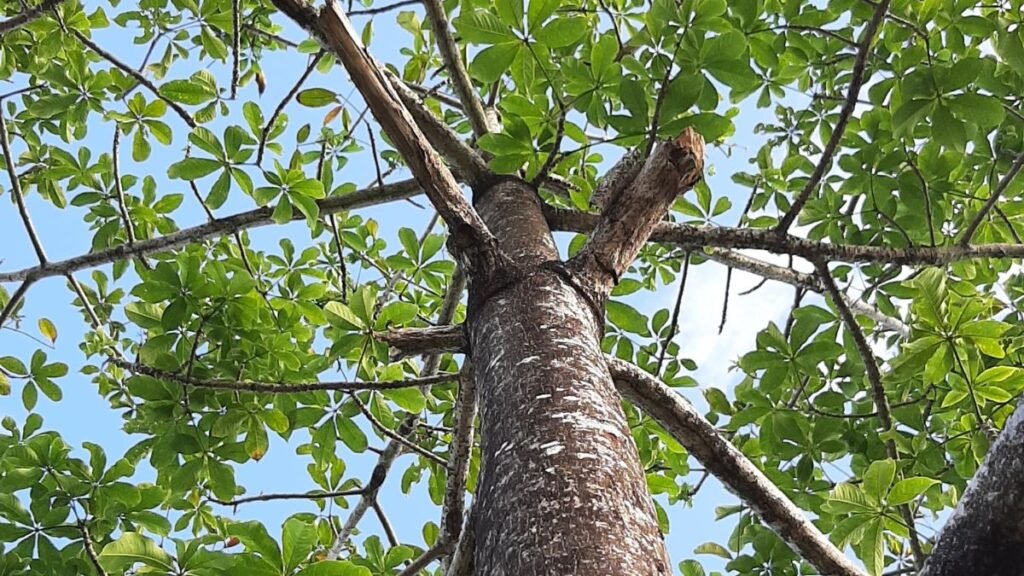
A Blend of Urban and Wild Amazon
Downtown’s sleek architecture sits just 30 miles from the Chico Mendes Reserve, a protected expanse of forests that showcases the incredible biodiversity of the Amazon.
This reserve is a sanctuary for countless species, a testament to conservation efforts that aim to preserve the unique ecosystems of the region. The city’s Human Development Index (HDI) of 0.727 outshines most Amazonian towns, proving modernity thrives here amidst the natural beauty.
Yet nature remains uncompromised in this vibrant locale. Howler monkeys vocalize at dawn, their calls echoing through the trees, while river dolphins surface in the Acre River, adding to the enchanting scenery. It’s a rare duality, urban convenience meets raw biodiversity, where the sounds of the city blend seamlessly with the calls of wildlife, creating a harmonious coexistence that captivates both residents and visitors alike.
Cultural Melting Pot: From Rubber Boom to Modernity
The 1900s rubber boom drew Northeastern Brazilians, Afro-Brazilians (9.5% of the population), and Indigenous groups (0.5%). Their legacy flavors local dishes, such as tacacá, a spicy soup made with jambu leaves.
Syrian-Lebanese immigrants also left their mark. The “Bairro Beirut” district dazzles with arched doorways and kibbeh stalls. At the Museu da Borracha, artifacts recount the boom and bust of the rubber era.
“Rio Branco’s cultural layers unfold like a living history book,”
Notes a curator at the Palace Museum. From human development milestones to rainforest rhythms, this city defies expectations at every turn.
Nature and Adventure in Rio Branco
Beyond the city streets lies a world of untouched wilderness waiting to be explored. The region offers a perfect mix of dense forests, winding rivers, and thriving wildlife, ideal for outdoor enthusiasts.
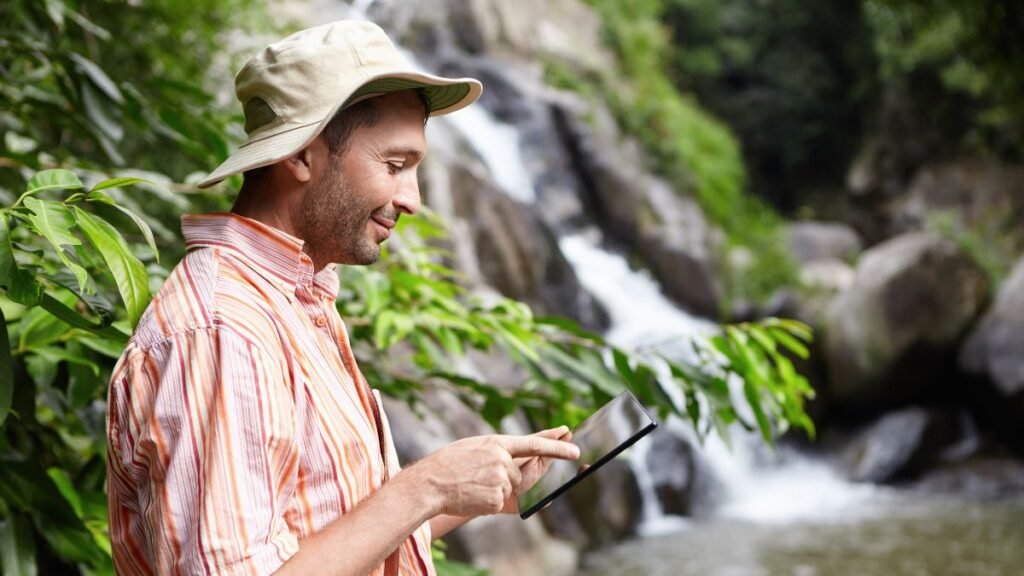
Chico Mendes Extractive Reserve
Covering 931,537 hectares, this reserve was established in 1990 to protect both the tropical rainforest and the livelihoods of local rubber tappers.
Sustainable rubber-tapping programs here strike a balance between conservation and economic needs, ensuring that local communities can thrive while preserving their environment. The reserve serves as a critical habitat for countless species, showcasing the rich biodiversity of the Amazon region, where unique flora and fauna coexist.
Named after environmentalist Chico Mendes, the reserve near Xapuri is a living example of harmony between humans and nature. Guided tours showcase how communities harvest rubber without harming the forests.
These tours educate visitors about sustainable practices and highlight the cultural heritage of the rubber tappers, who have honed their skills over generations. This connection to the land is vital for the community’s identity and its ongoing commitment to environmental stewardship.
Acre River’s Floodplain Ecosystems
Seasonal floods transform the landscape from October to May, with March rainfall reaching 585mm. The Acre River swells, creating rich habitats for fish and aquatic plants.
These floods are not just a seasonal phenomenon; they play a crucial role in maintaining the region’s biodiversity. The inundated areas become breeding grounds for various fish species, and the nutrient-rich waters support a diverse array of aquatic flora, which in turn sustains the local wildlife.
Canoe tours offer the best view of this dynamic ecosystem. Glide through flooded forests and spot caimans basking on riverbanks during the wet season. These tours are guided by knowledgeable locals who share insights about the flora and fauna, enhancing the experience with stories of the river’s significance to the community.
As you paddle along, keep an eye out for vibrant butterflies and the sounds of frogs, which contribute to the rich tapestry of life in this unique environment.
Birdwatching in the Tropical Rainforest
With over 650 species, this region is a paradise for bird lovers. Hyacinth macaws dazzle with their vibrant blue feathers, while toucans call from the canopy.
Birdwatchers can expect to see these iconic species, as well as a variety of hummingbirds, raptors, and other unique birds that thrive in the lush surroundings. The diverse habitats, ranging from wetlands to high canopies, provide opportunities to spot both common and rare species.
Top spots include:
- Xapuri trails – prime for spotting rare species, including the elusive jaguarundi
- Parque Capitão Ciríaco – home to native Amazonian birds and a peaceful environment for birdwatching
- Horto Florestal – urban trails with easy access, making it perfect for both novice and experienced birders
| Activity | Best Season | Highlights |
|---|---|---|
| Rubber-tapping tours | Year-round | Learn sustainable practices and the history of rubber tapping in the Amazon |
| Canoe adventures | Oct-May | Floodplain exploration and the chance to see wildlife up close |
| Birdwatching | Jun-Sept | Hyacinth macaw sightings and guided tours to find rare birds |
For more details on exploring these natural wonders, check out this complete guide to Rio Branco.
Planning Your Trip to Rio Branco
Planning a trip to Acre’s capital requires smart timing and insider knowledge. From navigating the climate to choosing the right base camp, here’s how to optimize your visit.
Best Time to Visit: Weather Insights
June to September offers ideal temperatures (avg 22°C/72°F) and minimal rain. This dry season unlocks outdoor adventures, free from muddy trails and highway delays.
Avoid March, the wettest month (585mm rainfall), when floods disrupt river tours. Pack layers; mornings can be cool even in the dry season.
Getting There: Flights and Highways
Fly into the international airport Rio Branco-Plácido de Castro, 18km from the city. LATAM operates routes from Brasília and Manaus.
Road trippers take BR-364, linking to Peru’s Interoceanic highway (BR-317). The scenic drive showcases the Amazon’s shifting landscapes.
Where to Stay: From Downtown to Eco-Lodges
Downtown’s Via Verde area has business hotels with easy access to museums. For a nature immersion experience, consider booking eco-lodges near the Chico Mendes Reserve.
- City center: Best for first-time visitors.
- Riverside cabins: Ideal for birdwatchers.
- Forest retreats: Perfect for sustainable tourism.
Conclusion: Rio Branco’s Hidden Charms Await
Acre’s heart beats between urban energy and untamed Amazonian adventures. This city blends rubber-era history with vibrant cultural festivals, making it a unique part of South America’s tapestry.
Plan your visit during ExpoAcre’s rodeo or during the dry season for an ideal exploration experience. As an emerging capital of eco-tourism, it rivals Manaus with fewer crowds and deeper authenticity.
For travelers craving wild trails and rich heritage, Rio Branco delivers both. Pack your sense of wonder, the Amazon’s secrets are calling. Learn More about Palmas.
FAQ
Where is Rio Branco located?
The city is located in western Brazil, serving as the capital of the state of Acre. It sits near the Acre River, close to the borders of Peru and Bolivia.
What makes this destination unique?
It blends Amazon rainforest landscapes with urban culture, offering a unique blend of historical sites, nature reserves, and vibrant local traditions.
When is the best time to visit?
The dry season (May–September) is ideal, with fewer rains and temperatures averaging 86°F (30°C). Humidity stays high year-round.
How do I reach the city?
Flights land at Plácido de Castro International Airport. Overland routes include the BR-317 and BR-364 highways, which connect to neighboring states.
What’s a must-see historical site?
The Gameleira Tree, a symbol of the rubber boom era, and the Autonomists Memorial, honoring Acre’s fight for statehood.
Are there eco-tourism options?
Yes. The Chico Mendes Reserve showcases sustainable rubber-tapping, while birdwatching thrives in the surrounding rainforests.
What local event should travelers experience?
ExpoAcre, an annual rodeo and cultural festival held in July, showcases regional music, food, and cowboy traditions.

